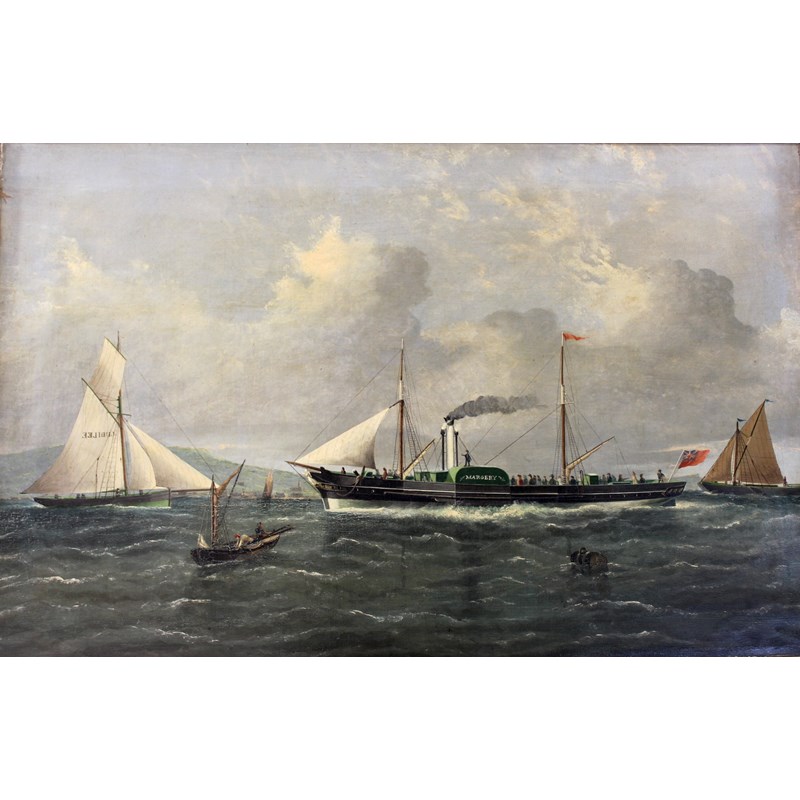Lot 1933
JOHN L. TUDGAY (Fl.1836-1859) THE PADDLE STEAMER `MARGERY` IN THE THAMES ESTUARY Signed and dated 1872, oil on canvas 57 x 90cm.
Footnote: This intriguing retrospective by Tudgay depicts the wooden paddle-steamer Margery, an extremely significant little vessel in the early history of steam navigation yet about which very little is known with certainty. Launched only two years after Henry Bell’s Comet, Europe’s first successful steamboat, Margery is said to have been built at Dumbarton by Archibald MacLachlan in 1814 and apparently measured 63 feet in length with a 12 foot beam. Engined by James Cook of Glasgow and registered at 70 tons burthen, she ran successfully on the Clyde for a short time until she was purchased by Anthony Cortis & Co. of London for use on the Thames. Taken through the Forth & Clyde Canal, where she had to have her paddle-boxes and sponsons removed because she was so wide, she then sailed down the east coast and entered the Thames in January 1815 where her arrival caused a huge sensation. It is very probable that Londoners had never seen a steamer before and, when she began her scheduled service to Gravesend on 23rd January as the first passenger-carrying paddle-steamer on the river, she was regarded as both a novelty as well as the harbinger of things to come. At the end of her first season [in 1815], she was sold to the French firm of Andriol, Pajol et cie who renamed her Elise and appointed a new captain. After sailing her round the coast to Newhaven, he then took her across to Havre on 17th-18th March 1816, thus completing the first-ever Channel crossing by a steamship. It took her 17 hours due to adverse southerly winds but it was another milestone in transport history from which there would be no going back. After many years running on the Seine, it is said that Elise’s rotting timbers were still lying on the riverbank as late as 1888 but there is no confirmation of this. We are most grateful to Michael Naxton for his assistance with this footnote.





